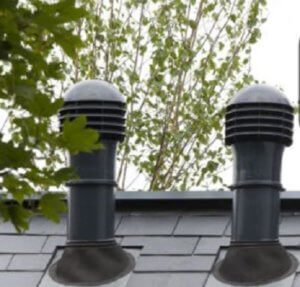 By Thomas Lipinski, Technical Director, Ventive Ltd…
By Thomas Lipinski, Technical Director, Ventive Ltd…
There’s a growing realisation in the construction industry that complex mechanical ventilation systems are a recipe for disaster for schools. As part of a recent report by the Royal Institution of British Architects (RIBA), 129 UK schools’ post-occupancy evaluations were analysed. It revealed a large number of technical ventilation devices were being disabled or abandoned having been deemed too burdensome for the school to manage. Problems included excessive electrical energy consumption, high base loads and lack of controllability, leading to overheating and discomfort.
Designers are taking a modern holistic approach to school building design to enhance energy efficiency and improve the learning environment whilst engineers are rapidly coming round to the idea that natural ventilation systems are a reliable, cost-effective option to the mechanical alternative.
Until recently, natural ventilation systems were known for two things – providing ventilation without electricity use and reducing overheating during warmer weather. The problem was they couldn’t recover heat when it turns colder.
The Ventive C900, a simple, ingenious British-made system carries out both tasks without the aid of electricity and the incumbent equipment and cost.
Richardson and Peat have first-hand experience of the passive ventilation, heat recovery system, having carried out the first installation of Ventive C900 at a UK school. In May 2015 we delivered a pioneering centre to help autistic children into mainstream education. The £1.2 million Cullum Centre at Salesian School in Chertsey, Surrey provides 20 places for autistic children and offers the structured support they need to access fully inclusive school placements.
The building’s design needed to maximise energy efficiency which the Ventive C900 helped to achieve. The system consists of a roof cowl, eleven of which were installed at the Cullum Centre, one per room. As well as being easy to install and negating the need for PV roof installation (due to the building achieve required energy savings with demand reduction alone), the Ventive C900 is a simple and effective operator.
In colder weather, warm air inside the building is driven through the Ventive C900 heat exchanger where it naturally warms up a supply of outside air on its way to the classroom. In spring and summer months the roof cowl works like a small wind collector, ensuring rooms remain naturally ventilated at all times.
Ventive C900 took two years to develop, and with UK schools spending £159m per year on heating according to RIBA, its general usage can’t come soon enough. On average, it is estimated Ventive C900 will reduce a school’s energy costs by £350 per year (per classroom).
An unsurprisingly sizeable saving when you consider the complications in managing mechanical ventilation systems often left running overnight or during school holidays. Besides electricity use, maintenance costs are another burden incurred by mechanical systems (including filters that need regular changing). Once fitted, Ventive C900 is free to use improving air quality and reducing energy use and associated costs.
Its manufacturers say the Ventive C900 will be suitable for most schools built in the UK.
For our children to succeed at school, the building itself needs to perform as well as the staff and students. A good reason, then, for architects and contractors alike to consider the benefits of Ventive C900.

